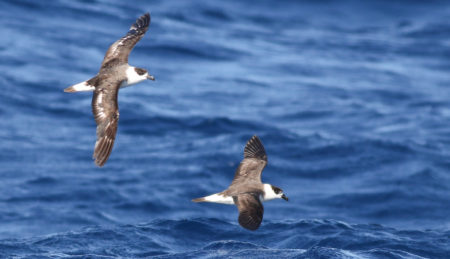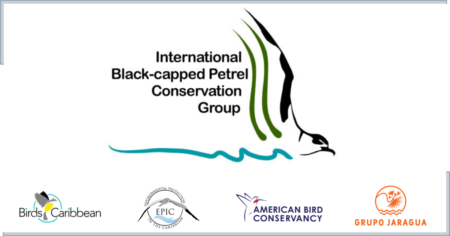“Conserving the Diablotin” informed by a decade of exploration and research

The Endangered Black-capped Petrel is a seabird so secretive that ten years ago, only one active nest had ever been located and monitored.
Despite this tremendous gap in knowledge, the International Black-capped Petrel Conservation Group created an action plan in 2012 to guide the conservation of this rare seabird. Now, after a decade of searches, studies, and management actions, producing tremendous advancements in our understanding of this species, partners have released a new guide to empower petrel conservationists. The recently released “Conserving the Diablotin: Black-capped Petrel Conservation Update and Action Plan” lays out nine strategies to enable conservation and address threats to the species and its habitat.
The Black-capped Petrel is the rarest nesting seabird in the Caribbean, with only an estimated 2,000 breeding pairs remaining worldwide. Conservationists have now located more than 100 nests on the island of Hispaniola, and found evidence of smaller populations possibly breeding on Dominica, Guadeloupe, and Cuba. Once common in the Caribbean, the species’ population was decimated over the past two centuries by overhunting, the introduction of mammalian predators, and the destruction of its forested nesting habitat. Predation and habitat loss continue to threaten the species; just this past season, a number of petrels were killed and nests lost due to predators and habitat destruction.
In the new Conservation Update and Action Plan, the authors identified the strategies and actions most likely to combat the threats of predation and habitat loss. Community engagement, already begun at some petrel sites, is key to habitat preservation. Other strategies, including continued searches for the petrel, capacity building of local conservation organizations, restoration approaches, and advocacy for the species when at sea, are in place or in planning. Preventing petrel extinction requires that all of these strategies be complementary and employed together.
“This new road map to the recovery of the Black-capped Petrel calls for a multi-organizational approach to implementation. Fortunately, efforts on behalf of the species thus far have been notable for a high level of cooperation and communication. It’s been very gratifying,” stated Jennifer Wheeler, lead author of the document.
The core team that authored “Conserving the Diablotin” come from a varied group of organizations, including BirdsCaribbean, Clemson University, Cornell University, Environmental Protection in the Caribbean, Grupo Jaragua, and American Bird Conservancy. The authors drew on the expertise of a long list of collaborators from around the world and applied lessons learned from a number of successful projects with related species facing similar conservation problems.
The release of “Conserving the Diablotin” is a milestone for the group of individuals and organizations working to protect and study the Black-capped Petrel for so many years. This work was made possible by the financial support of many donors, chief among them the U.S. Fish and Wildlife Service.
For more information on the Black-capped Petrel, please visit the below links:
- International Black-capped Petrel Conservation Group
- Conserving the Diablotin: Black-capped Petrel Conservation Update and Action Plan

Contacts:
Jennifer Wheeler
BirdsCaribbean
jennifer.wheeler@birdscaribbean.org
1-703-424-5086
Our mission is to raise awareness, promote sound science, and empower local partners to build a region where people appreciate, conserve and benefit from thriving bird populations and ecosystems.
Adam Brown
Environmental Protection in the Caribbean (EPIC)
1-707-845-1171
Protecting the Caribbean environment through research and community-based action.
Brad Keitt
American Bird Conservancy (ABC)
1-831-420-7115
Dedicated to achieving conservation results for birds of the Americas.
Ernst Rupp
Grupo Jaragua
ernst.rupp@grupojaragua.org.do
1-829-776-6510
Contribuir a la conservación de la biodiversidad de la isla La Española y los servicios ambientales que se deriven de ella, con la participación de las comunidades locales y apoyándose en la ciencia.

One comment
Comments are closed.